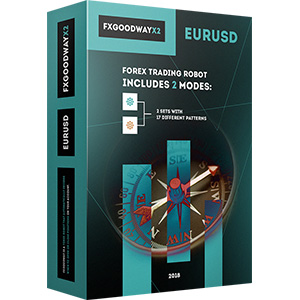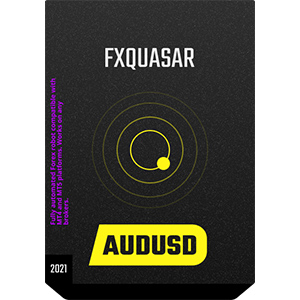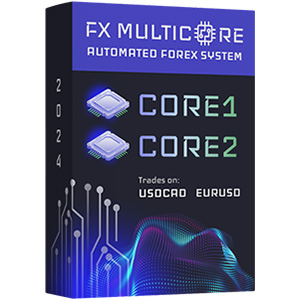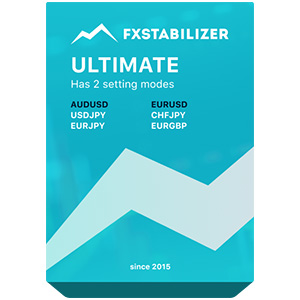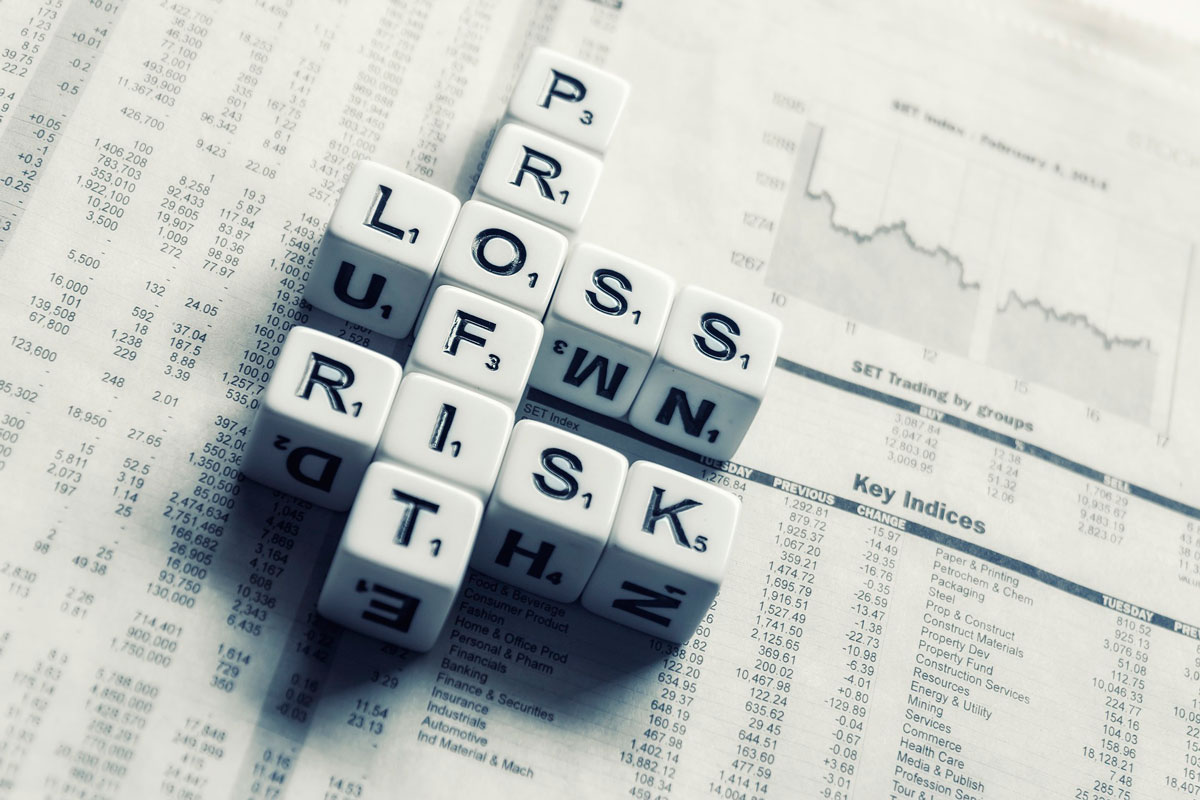
外国為替の資金管理は、外国為替取引における成功の重要な要素の1つです。手動で取引するか、自動外国為替取引のために外国為替ロボットを使用しているかに関係なく、リスクを管理し資金を守る方法を知っている必要があります。それがこの記事の内容です。詳細を知るために読み続けてください!
イントロ
外国為替取引が利益を上げるだけでなく、安定して利益を上げるためには、成功する戦略を開発するだけでは不十分です。取引所や通貨の価格に取引を行うことには常にリスクと不確実性が伴い、すべてのオプションを事前に計算することは不可能です。したがって、経験豊富なトレーダーでさえしばしば損失を被りますが、彼らの成功の秘訣は収益が利益を上回り、結果として常に「黒字」になることです。
どうすればこれらの成功したトレーダーの1人になり、損失を心配することなく神経を使わずに済むのでしょうか?外国為替で最初のステップから専門家が推奨する資金管理技術が、この結果を得るのに役立ちます。この記事では、資金管理の基本的な技術とルール、その利点、および特徴について説明します。
資金管理とは何ですか?
我々はすでに何度も述べてきたように、外国為替取引は仕事であり、この活動をそのように扱うべきだと考えます。預金口座を開設する初心者は、興奮や欲望に圧倒され、技術や取引戦略を学ばず、悪名高い本能や運に頼ることを望んでいます。そのような「トレーダー」の不器用で無謀な取引の結果は明らかです - 数回の失敗した取引で預金を完全に失い、その後、外国為替市場を去ります。さらに、彼らは怒りのこもった記事や暴露メッセージを書き、失敗をブローカーやさらには通貨市場全体のせいにしようとします。同時に、外国為替市場で良い収入を得ている何百万人もの人々がいます。たまたま成功した取引の結果だけでなく、定期的にです。彼らの多くは通貨取引を主な仕事にしています。最初と二番目の違いは何でしょうか?もちろん、それは取引自体へのアプローチと態度です。外国為替市場での成功は、次の3つの重要な側面を含んでいます:
3つの要素の組み合わせだけが、ほとんどのトレーダーが目指す安定したポジティブな結果をもたらします。最初の2つについて何度も話してきましたが、マネーマネジメントについてはまだ触れていません。では、それは何でしょうか?
マネーマネジメントとは、資本の分配と取引における管理のための特別なテクニックの集まりです。最も成功したテクニックの多くは、何千人もの外国為替取引トレーダーによって開発され、テストされていますので、何かを発明する必要はありません。よく知られた情報をただ利用すれば良いのです。
マネーマネジメントのテクニックは誰にでも簡単に理解できるものです。主な問題は、欲望や欲に負けずに、計画を体系的に実行することです。
トレーディングにおける資金管理の利点
フォレックスで取引を行う際、いくつかの取引で損失を出さずには済みません。特定のイベントの影響を受けて通貨がどの方向に動くかを正確に予測することは、最も経験豊富で成功を収めているフォレックストレーダーでさえ不可能です。収入と支出の正しい計画、ロットサイズの適切な選択、損失を受け入れられる水準で固定することが別の重要な点です。これにより、収益が損失を一貫して上回るため、あなたの口座は着実に成長します。
例えば、トレーダーが1日に5つの取引を結んだとします。そのうち4つは利益を上げ、1つは損失を出しました。同時に、成功した取引の利益は合計で25ドルであり、損失は30ドルでした。その日の終わりに、トレーダーの口座は5ドル減少しました。
翌日、トレーダーは同じ数の取引を結びました。そのうち2つは利益を上げ、3つは損失を出しましたが、資金管理テクニックを使用し、明確な計画に従いました。22取引からの収入は20ドルで、損失は15ドルでした。これは、全体的には成功の少ない日であったにもかかわらず、口座を5ドル増やすことができたことを意味します。
フォレックス口座をどのように管理するか?実際のところ、資金管理は4つのステップで行われます:
- 資本を守ること、つまり欲張らず、多くを過大評価せず、無謀にレバレッジを使用せず、利益と損失を適切な水準で固定しないこと;
- 利益を上げること。適切な取引戦略を開発し、それに固執し、疑わしい取引に資金を散財しないこと;
- 利益の増加。この段階は、前の2つから論理的に続くものです。資本の安全性を考慮し、利益を上げるなら、口座への入金が増え、取引の機会が増えます;
- ここでは説明は不要です。利益を上げ、口座から引き出し、もはや取引をしないのであれば、Forexでの成功について話す必要はありません。
少なくとも1つの段階をスキップすると、成功する取引戦略でも預金を「排出」したり、利益が少なすぎたりすることを防ぐことはできません。そのため、取引において資金管理が非常に重要であるのです。
リスクと資金管理
資金管理はリスクを軽減するとよく言われますが、多くのトレーダーがこのフレーズを完全に理解していません。むしろ、資金管理を通じて、取引戦略にとって許容できる損失リスクを独自に決定できるという点です。
取引ごとのリスクは、預金の割合として計算されます。つまり、希望するリスクの1%は、現在の口座残高の金額の1%を超えないように損失した場合のことです。たとえば、預金が100ドルで、5ドルの取引を行う場合、損失が預金の1%(1ドル)を超えないように、損切り(取引が終了する水準)を4ドルに設定する必要があります。
リスクの原則に従い、資金管理は通常、3つのカテゴリに分けられます:
- 保守的で、リスクの1-2%が置かれる。このアプローチにより資本を節約できますが、利益はあまり高くなりません - 事実、わずかな通貨の変動でも潜在的に利益をもたらす取引を終了させる可能性があります。
- 穏やか(取引あたりのリスク率3-5%)。このアプローチは最適とされ、損失のリスクは小さく、利益の可能性は高まります。
- 攻撃的(取引あたり5-20%)。このアプローチは、短期間で大きな利益を得ようとするトレーダーによって使用されます。このような戦略は、自分の行動に絶対的な自信があり、同時に少ないレバレッジを使用する場合にのみ有効です。
一部のトレーダーは、取引にストップロスを設定する理由がないと考え、成功を確信しています。残念ながら、この場合、確信できることは1つだけです。数回の取引後に文字通りデポジットが迅速に流れることだけです。市場には、通貨が数時間で崩壊し、リスクの受け入れ可能なレベルを修正しなかった大手トレーダーやブローカーの口座がリセットされる多くの事例が知られています。
資金管理の主なルール
実際、すべての外国為替の資金管理は、資本を築き上げようとするすべての人が従う必要がある数十の単純なルールのセットです。それらをリストアップしましょう:
- 必要に応じて預金額を測定してください。ブローカーは口座開設を5〜10ドルから提供していますが、そのような口座での取引で数百ドルを受け取ることは期待しないでください。勉強中で大金をリスクにする準備ができていない場合、あなたにとっての最大預金額は50〜100ドルです(非常に成功した取引でも、収入は数十ドルに限られます)。お金を稼ぎたいと考え、自分の能力に自信がある場合は、大金を投資してください。
- 自分のお金で取引してください。レバレッジは悪です、特に小さな預金を持つ初心者にとっては。FXは借り入れ資金を活用するための素晴らしい機会を提供しています(預金額に対して1:500まで借り入れることができますが、通貨価値のわずかな変動でもすぐに口座がマージされることを認識すべきです)。利用できる最大のレバレッジは1:10です。例。預金額が100ドルで、レバレッジが1:500の場合(つまり、トレーダーは5万ドルを期待できます)。自分が正しいと確信しているトレーダーは、1:100のレバレッジを使用して1万ドルの取引を開きます。しかし、通貨価格がわずか1%下落し、損失が100ドルになりました - つまり、トレーダーは口座内のすべてのお金を失い、取引は自動的に閉じられました。その後価格が上がっても、トレーダーには何の利益ももたらされません。
- 取引を減らしてください!同時に多くの取引を開くと、預金を過負荷にして損失のリスクを高めます(預金不足のため一部の取引が自動的に閉じられ、損失が確定します)。機動の可能性のために、口座に十分な資金が残っている必要があります。
- 取引の数を制限してください。専門家によると、1つの取引(どれだけ利益が見込めるかに関係なく)は現在の預金の5%を超えてはいけません。この場合、損失は最小限に抑えられます。
- ストップロスとテイクプロフィットは成功の鍵です。取引を開く際に、取引が自動的に閉じられる損失と利益の金額を必ず記録してください。市場は予測不可能であり、1つの失敗した取引で口座全体をマージするリスクがあります。
- トレーリングストップを使用してください。これは特別な種類のストップロスであり、取引を閉じるための損失が事前に設定された固定額ではありません。トレーリング時には、通貨レートの状況に基づいてブローカーが「ストップ」の瞬間を計算し、為替レートの短期的な変動をカットすることができます。
- 収益性と損失トレードの比率を考慮してください。1:2の場合、利益が出ます。1:3の場合、同じ水準にとどまります。たとえば- 300ドルの利益が得られる1つの取引で、100ドルの損失を3回結んでも資本を維持できます。100ドルの損失が2回だけの場合、100ドルの利益が得られます。
- 物理的におよび心理的に準備ができているときだけ取引してください。取引に従事する際は、「分隊で」取引を行い、同時に子供を揺り動かしたり、眠い状態で取引したり、体温が上がっているときに取引しないでください。これは明らかに感謝されないし、利益をもたらすビジネスではありません。FXは極度の集中力と冷静な頭を必要とします。
- 手にある鳥が良いです。多くの取引を結んでそれらから小さな利益を確定させることで、目標を達成する可能性が高くなります。たとえわずかな利益しか得られなくても、永続的な損失よりも良いです。
- 自分自身の通貨ペアを選択してください。FXでは、スプレッドというものがあります - つまり、買い値と売り値の差であり、ブローカーの主要な収入源です。数ポイント(つまり、価格の範囲が非常に小さい)または数百ポイントになることがあります。最後の通貨ペアは、そのような手数料に耐えられる大口預金を持つ人々に任せて、小規模から始めてください - たとえば、最も流動性が高く人気のある通貨のスプレッドは小さいです。
これらのルールに従うことで、あなたの外国為替取引をバランスよくかつ利益を上げることができます。しかし、それだけでは不十分です。資金管理を使用した特定の取引戦略も必要です。
成功する外国為替取引のための資金管理戦略
どんな外国為替取引戦略も、自分自身のために開発されたルールです - 何を、いつ、どのように売買するかを決め、最大の利益を得るためのものです。ただし、どんな戦略も、いくら買い、売りするかを決定するための資金管理で補完する必要があります。これを行うには、次の手順を踏んでください:
- 十分な金額の預金を入れる;
- 取引の金額を決定する;
- 取引回数を決定する;
- ストップロスとテイクプロフィットを設定する;
- 常に利益と損失を計算し、適切な時期に取引回数と金額を変更する。
資金管理戦略と呼ばれるほとんどのテクニックは、各取引の金額を計算することに基づいています。これは利益と損失の額、そしてアカウントの総合状況に影響を与える要素です。これらはいくつかのグループに分けることができます:
- 預金とレバレッジの最大金額を使用して「オールイン」で取引し、最小の投資で大きな利益を得る。この無謀な方針は、破産したトレーダーの90%によって追求されました;
- 各取引の固定サイズで、現在の預金額に依存しない;
- マーチンゲール技術、損失を受け取った場合、次の取引はより大きな金額で締結される。
固定ロットサイズまたは預金の一部 - 注意して取引する
金融市場の最も合理的で正当化された専門家は、ロット数量を計算する技術を考慮しています。これは、ほとんどの成功したトレーダーが主な仕事として外国為替取引を選び、安定した収入を得るために行っていることです。
もし固定ロットサイズを使用する場合、それは各取引が厳密に定義された金額で締結されることを意味します。そのサイズは、このまたはそのロットがどれほど収益性があるかに依存しません。その結果、各ケースでわずかな金額をリスクにさらし、より多くの取引を締結する機会を得ます。
預金の一部としてのロットは、より高度な技術です。アカウントが成長すると、各取引の金額が増加し、損失が発生すると、取引はより小さい金額で締結されます。専門家は、現在の預金額の5%を超えるロットサイズを設定しないことをお勧めしており、その場合、リスクと利益がバランスを保つことができます。
マーチンゲールテクニック:利益が損失を上回る場合
ギャンブルやカジノから外国為替にやってきた別のテクニックについて言及する価値があります。マーチンゲール戦略の本質は、負けた取引の後に、前回の損失をカバーする金額で新しい取引に参加することです - たとえば、「倍のくじ」についてよく話されます。つまり、5ドルで取引を行い、損失を被った場合、次の取引は10ドルで行うべきです。
確率論によれば、連続した失敗は永遠に続くことはないため、最初の成功した取引は前の取引からの損失を十分にカバーするでしょう。したがって、どのような展開でも黒字に留まることができます。カジノでの賭けには正当化されていますが、マーチンゲールテクニックは外国為替に適していますか?
無制限の預金があり、取引をゲームとして扱う場合、もちろん、そのような戦略は遅かれ早かれ実を結ぶでしょう。ただし、トレーダーがリスクと利益を計算し、資金を適切に管理し、余分な利益を自己資本の損失に対して追求しないような、熟考されたバランスの取れた取引戦略には全く適していません。
ただし、マーチンゲール法は、わずかに修正されたバージョンで外国為替取引(Forex)で使用され、非常に成功しています。これは、ロットを倍にするのではなく、失敗した取引の損失をカバーするだけのわずかな金額で増やすことについてです(増加率は1.05から1.2までの範囲になります)。このアプローチは非常に効果的である可能性がありますが、リスクと利益の確率を正しく計算できる場合に限ります。
要約
つまり、マネーマネジメントは、トレーダーが安定した収入を得るために必要な特別なテクニックです。マネーマネジメントは、大きな損失のリスクを減らすだけでなく、より多くの収入の可能性を高めることができます。これにより、ロットサイズを正しく計算し、損失を一定のレベルで固定することができます。
収益を得ることができる収益を得るための収益を得るための収益を得るための収益を得るための収益を得るための収益を得るための収益を得るための収益を得るための収益を得るための収益を得るための収益を得るための収益を得るための収益を得るための収益を得るための収益を得るための収益を得るための収益を得るための収益を得るための収益を得るための収益を得るための収益を得るための収益を得るための収益を得るための収益を得るための収益を得るための収益を得るための収益を得るための収益を得るための収益を得るための収益を得るための収益を得るための収益を得るための収益を得るための収益を得るための収益を得るための収益を得るための収益を得るための収益を得るための収益を得るための収益を得るための収益を得るための収益を得るための収益を得るための収益を得るための収益を得るための収益を得るための収益を得るための収益を得るための収益を得るための収益を得るための収益を得るための収益を得るための収益を得るための収益を得るための収益を得るための収益を得るための収益を得るための収益を得るための収益を得るための収益を得るための収益を得るための収益を得るための収益を得るための収益を得るための収益を得るための収益を得るための収益を得るための収益を得るための収益を得るための収益を得るための収益を得るための収益を得るための収益を得るための収益を得るための収益を得るための収益を得るための収益を得るための収益を得るための収益を得るための収益を得るための収益を得るための収益を得るための収益を得るための収益を得るための収益を得るための収益を得るための収益を得るための収益を得るための収益を得るための収益を得るための収益を得るための収益を得るための収益を得るための収益を得るための収益を得るための収益を得るための収益を得るための収益を得るための収益を得るための収益を得るための収益を得るための収益を得るための収益を得るための収益を得るための収益を得るための収益を得るための収益を得るための収益を得るための収益を得るための収益を得るための収益を得るための収益を得るための収益を得るための収益を得るための収益を得るための収益を得るための収益を得るための収益を得るための収益を得るための収益を得るための収益を得るための収益を得るための収益を得るための収益を得るための収益を得るための収益を得るための収益を得るための収益を得るための収益を得るための収益を得るための収益を得るための収益を得るための収益を得るための収益を得るための収益を得るための収益を得るための収益を得るための収益を得るための収益を得るための収益を得るための収益を得るための収益を得るための収益を得るための収益を得るための収益を得るための収益を得るための収益を得るための収益を得るための収益を得るための収益を得るための収益を得るための収益を得るための収益を得るための収益を得るための収益を得るための収益を得るための収益を得るための収益を得るための収益を得るための収益を得るための収益を得るための収益を得るための収益を得るための収益を得るための収益を得るための収益を得るための収益を得るための収益を得るための収益を得るための収益を得るための収益を得るための収益を得るための収益を得るための収益を得るための収益を得るための収益を得るための収益を得るための収益を得るための収益を得るための収益を得るための収益を得るための収益を得るための収益を得るための収益を得るための収益を得るための収益を得るための収益を得るための収益を得るための収益を得るための収益を得るための収益を得るための収益を得るための収益を得るための収益を得るための収益を得るための収益を得るための収益を得るための収益を得るための収益を得るための収益を得るための収益を得るための収益を得るための収益を得るための収益を得るための収益を得るための収益を得るための収益を得るための収益を得るための収益を得るための収益を得るための収益を得るための収益を得るための収益を得るための収益を得るための収益を得るための収益を得るための収益を得るための収益を得るための収益を得るための収益を得るための収益を得るための収益を得るための収益を得るための収益を得るための収益を得るための収益を得るための収益を得るための収益を得るための収益を得るための収益を得るための収益を得るための収益を得るための収益を得るための収益を得るための収益を得るための収益を得るための収益を得るための収益を得るための収益を得るための収益を得るための収益を得るための収益を得るための収益を得るための収益を得るための収益を得るための収益を得るための収益を得るための収益を得るための収益を得るための収益を得るための収益を得るための収益を得るための収益を得るための収益を得るための収益を得るための収益を得るための収益を得るための収益を得るための収益を得るための収益を得るための収益を得るための収益を得るための収益を得るための収益を得るための収益を得るための収益を得るための収益を得るための収益を得るための収益を得るための収益を得るための収益を得るための収益を得るための収益を得るための収益を得るための収益を得るための収益を得るための収益を得るための収益を得るための収益を得るための収益を得るための収益を得るための収益を得るための収益を得るための収益を得るための収益を得るための収益を得るための収益を得るための収益を得るための収益を得るための収益を得るための収益を得るための収益を得るための収益を得るための収益を得るための収益を得るための収益を得るための収益を得るための収益を得るための収益を得るための収益を得るための収益を得るための収益を得るための収益を得るための収益を得るための収益を得るための収益を得るための収益を得るための収益を得るための収益を得るための収益を得るための収益を得るための収益を得るための収益を得るための収益を得るための収益を得るための収益を得るための収益を得るための収益を得るための収益を得るための収益を得るための収益を得るための収益を得るための収益を得るための収益を得るための収益を得るための収益を得るための収益を得るための収益を得るための収益を得るための収益を得るための収益を得るための収益を得るための収益を得るための収益を得るための収益を得るための収益を得るための収益を得るための収益を得るための収益を得るための収益を得るための収益を得るための収益を得るための収益を得るための収益を得るための収益を得るための収益を得るための収益を得るための収益を得るための収益を得るための収益を得るための収益を得るための収益を得るための収益を得るための収益を得るための収益を得るための収益を得るための収益を得るための収益を得




